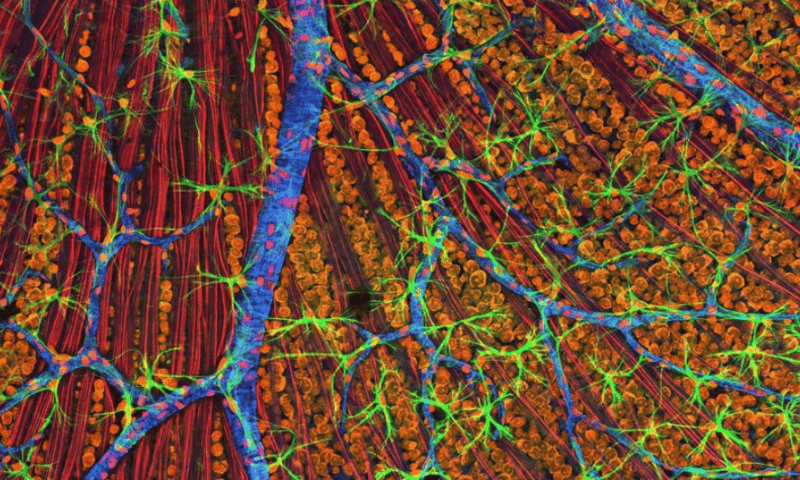A startup that aims to provide 3D views into the inner workings of tissue, ultimately charting out deep cellular maps for a better understanding of organ function and disease, is getting a big boost.
Spatial multi-omics developer Stellaromics has collected $25 million through a series A venture capital round to help shepherd its STARmap technology for measuring gene expression levels within thick slices of biological samples with their tissue architecture still intact.
Short for Spatially-resolved Transcript Amplicon Readout mapping, the approach works alongside the company’s RIBOmap, for ribosome-bound mRNA mapping, to catalog protein synthesis at single-cell and spatial resolution.
This allows researchers to construct 3D anatomical atlases down to the sub-cellular, single-molecule level. A recent paper published in the journal Nature was able to profile more than 1,000 genes within the brain and spinal cord of a mouse, illustrating its anatomy and function by identifying 230 cell types by their individual gene expression as well as 106 distinct tissue regions.
Stellaromics’ fundraising was backed by an unnamed private family office based in Silicon Valley as well as Plaisance Capital Management—whose principal, Ye Fu, also serves as Stellaromics’ co-founder and now its chief technology officer.
The company also appointed Todd Dickinson as president and CEO alongside the financing round. Dickinson previously held technical and commercial executive roles at Illumina and Bionano Genomics. Most recently he served as CEO of Cantata Bio, an epigenomics developer born out of the merger of Dovetail Genomics and Arc Bio, two companies under EdenRoc Sciences’ portfolio.
Stellaromics’ pair of scientific co-founders comprise Karl Deisseroth, the D.H. Chen Professor of Bioengineering and Psychiatry and Behavioral Sciences at Stanford University, and Xiao Wang, the Edward Scolnick Professor at the Broad Institute of MIT and Harvard.
“Spatial biology has quickly established itself as one of the most exciting biological technologies of this decade,” Dickinson said in a statement. “But today’s approaches remain constrained to two-dimensional tissue profiles, and limited largely to expression of a handful of genes at a single point in time.”
“Our goal is to enable scientists to capture ultra high-resolution, three-dimensional, multi-omic information from thick tissue samples, mapping not only gene expression patterns, but also revealing those genes that are being translated to proteins. By generating a far richer, functional readout of each cell in its native state across a broad range of different samples, from tumors to neurological disease samples, our technology will enable a new level of insight into the mechanisms of disease and how to treat them,” he added.
The $25 million round will help further grow the Stellaromics team, establish a company headquarters and fund the planned commercialization of its Plexa in situ analyzer, with an early-access alpha version currently slated for 2024.

